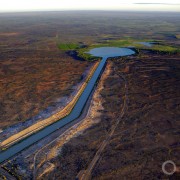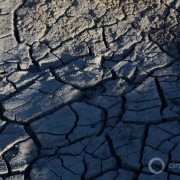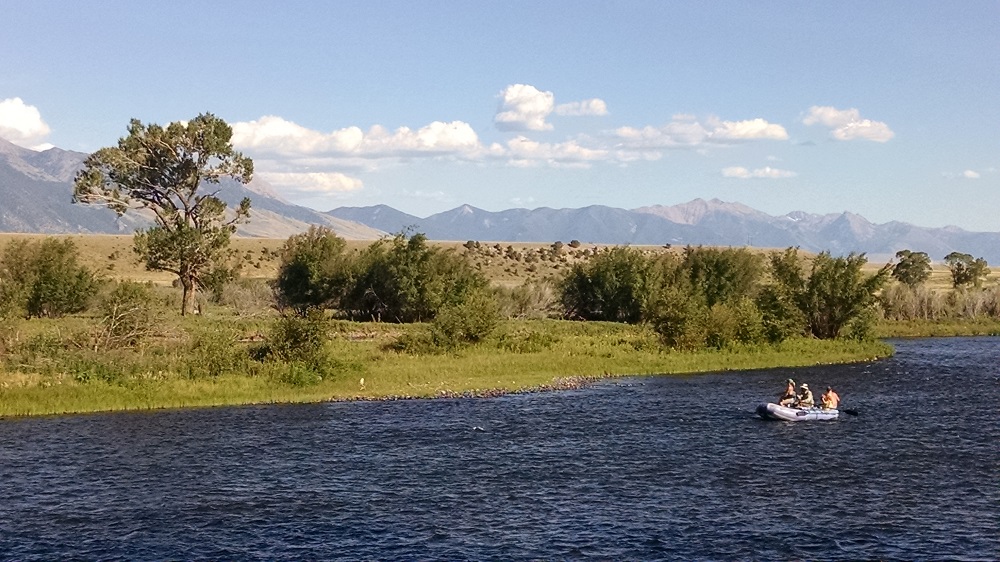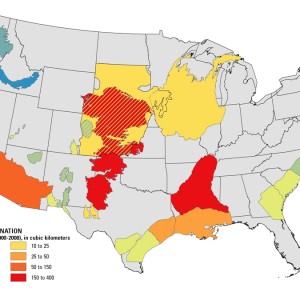U.S. Marks At Least 65 Years of National Water Crisis
A short history lesson about water shortage, water wars, and drought in the United States.
“The water shortage is spreading like a creeping paralysis,” claims a major national magazine, printing the words beneath before-and-after photographs of the reservoir behind Arizona’s Roosevelt Dam.
In the first photo, the reservoir is brimmed with water. Five dry years later, it is a dusty basin.
“We are using up our underground supply faster than nature can replenish it,” the article continues. “The Middle West and industrial East are feeling the pinch but in the semiarid Southwest the trouble is coming to a head.”
This is not a passage about last year’s historic drought in the Great Plains, nor is it gleaned from a recent special edition, such as National Geographic’s water issue published in 2010.
The author Lester Velie wrote these words for the May 15 edition of Collier’s – in 1948.
Velie argues that the U.S. water crisis – though he never uses that term – in the post-war era is not a matter of insufficient rainfall. It is due to demand, he says:
“But drought, even as war and pestilence, must pass. The kind of water shortage many communities face has nothing to do with drought. Far from passing, the shortage is, as one alarmed geologist described it, ‘spreading like a creeping paralysis.’ We are using up our underground water faster than nature can replenish it. Stored by years of rainfall it has become in some areas an exhausted resource. Chalk it up to overpumping. We are also running out of surface water – our river and lakes. Blame overpopulation.”
I found the article while doing research for my story on agricultural and economic transitions in the Texas high plains. As far as I can tell, the Collier’s piece is the first story in the American popular press to argue that water shortages are a national problem and not just a regional phenomenon. (You can read the first few paragraphs of Velie’s article here. After the jump, it continues on page 11 here.)
Reading Velie’s reporting is a mind trip (a trip I do recommend you take). The stuff could have been printed yesterday. In some ways it probably was because the language is the same. Water wars, water as lifeblood, the increased cost of pumping from shrinking wells, a Colorado River with more claims to water than actual supply – Velie writes about all of these.
Even the concept of water footprinting, years before the term was created, comes up when Velie mentions that 246,000 liters (65,000 gallons) of water are needed to produce one ton of steel and 57 liters (15 gallons) of water to make a gallon of beer.
The remedies too are familiar. Velie hears people talking about cloud seeding and desalination, and he finds vigilantes checking water meters to guard against wasteful scofflaws in a Southern California coastal town that earned the temporary appellation “Sahara Barbara”.
Velie’s ultimate prescription is another old song: conservation.
“One hundred and forty-five million of us can’t live on this continent of ours without drawing on its water,” he writes in his concluding paragraph. “We found we could use wood and still conserve trees. We can do the same with water. It looks as if we’ll have to stop letting our most basic resource flow down the drain.”
At that point, only eight states had laws governing the use of groundwater. As I have written for Circle of Blue, new restrictions on groundwater withdrawals – some voluntary, some mandatory – are cropping up in states across the U.S. West now.
A catastrophic water crisis has not occurred in the U.S. because water managers policymakers have responded. Utilities tightened valves to keep more of their product in the pipe. Toilets, showers and washing machines use less water thanks to new standards. Industries and cities have embraced water recycling and are trimming away additional waste. Farmers have accepted restrictions, bought efficient sprinklers, or sold water to urban areas where it creates more wealth per unit.
The question now is whether the present state of affairs is different from past claims of crisis. Water shortages have certainly altered some regions. Irrigated acreage in the Texas high plains is down a quarter since its peak in the 1970s. Aquifer depletion, according to a study released last week from the U.S. Geological Survey, has increased nationally since 2000.
However, the direst pronouncement in the Collier’s article, that growth in the U.S. Southwest could shut down in two decades because of no water, has not come to pass. Improvements in water efficiency have averted calamity.
The story for this century is how to continue those gains as the population increases and the water cycle and water supply wobble in new patterns.
Know of any earlier stories from the national press of a U.S. water quantity crisis? Contact Brett Walton
Brett writes about agriculture, energy, infrastructure, and the politics and economics of water in the United States. He also writes the Federal Water Tap, Circle of Blue’s weekly digest of U.S. government water news. He is the winner of two Society of Environmental Journalists reporting awards, one of the top honors in American environmental journalism: first place for explanatory reporting for a series on septic system pollution in the United States(2016) and third place for beat reporting in a small market (2014). He received the Sierra Club’s Distinguished Service Award in 2018. Brett lives in Seattle, where he hikes the mountains and bakes pies. Contact Brett Walton









Leave a Reply
Want to join the discussion?Feel free to contribute!